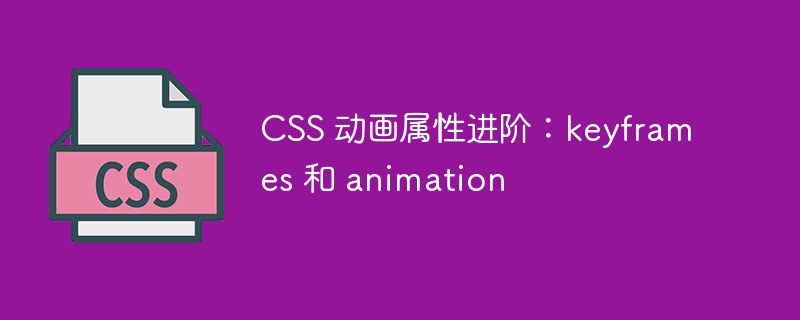

Advanced CSS animation properties: keyframes and animation
CSS animation is an important part of web design. It can create a flowing effect by displaying continuous images. , increase the visual appeal of the page. In CSS, we can use a variety of animation properties to create various effects. This article will focus on two core animation properties: keyframes and animation, and provide specific code examples.
1. keyframes
Keyframes are keyframe rules that define animation sequences. Each rule can specify the style of an element at a specific point in the animation cycle. Here is a simple keyframes example:
@keyframes fade-in {
0% { opacity: 0; }
100% { opacity: 1; }
}In the above example, we use the @keyframes keyword to define an animation called fade-in. This animation transitions from a transparency level of 0 (0%) to a transparency level of 1 (100%). We can use any percentage value to define keyframe rules.
2. animation
The animation attribute is a shorthand attribute, used to simultaneously set a series of animation attributes specified by @keyframes rules. The following is an example of using the animation attribute:
.element {
animation-name: fade-in;
animation-duration: 3s;
animation-delay: 1s;
animation-fill-mode: forwards;
animation-timing-function: ease-in-out;
}In the above example, we use the animation-name attribute to specify the name of the animation to be applied, and the animation-duration attribute to specify the duration of the animation (3 seconds) , the animation-delay attribute is used to specify the delay time of the animation (1 second), the animation-fill-mode attribute is used to specify that the state of the element will remain the state of the last keyframe after the animation ends, and the animation-timing-function attribute is used to specify the animation time curve.
3. Combined use of keyframes and animation
Combined use of keyframes and animation properties can create more complex animation effects. Here is an example of using the keyframes and animation attributes together:
@keyframes pulse {
0% { transform: scale(1); }
50% { transform: scale(1.2); }
100% { transform: scale(1); }
}
.element {
animation-name: pulse;
animation-duration: 2s;
animation-iteration-count: infinite;
}In the above example, we have defined an animation called pulse that applies zooming in and out on the element through different keyframe rules. Effect. We set the animation to loop infinitely using the animation-iteration-count property.
Summary:
keyframes and animation are two very important properties in CSS animation. keyframes are used to define keyframe rules for animation sequences, which can specify the style of elements at specific points in the animation cycle. The animation property is used to simultaneously set a series of animation properties specified by @keyframes rules. Combining these two properties can create a variety of complex animation effects.
I hope the code examples in this article can help readers better understand and use the CSS animation properties keyframes and animation. Of course, this is just the basis of animation, and there are many more powerful CSS animation techniques waiting for us to explore. Let's work together to create amazing web animations!
The above is the detailed content of Advanced CSS animation properties: keyframes and animation. For more information, please follow other related articles on the PHP Chinese website!




